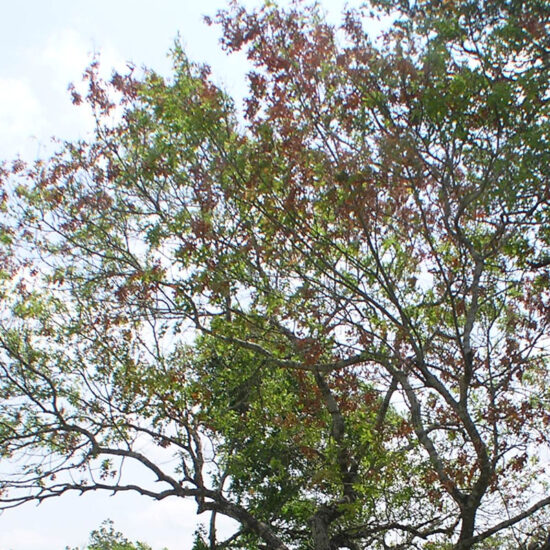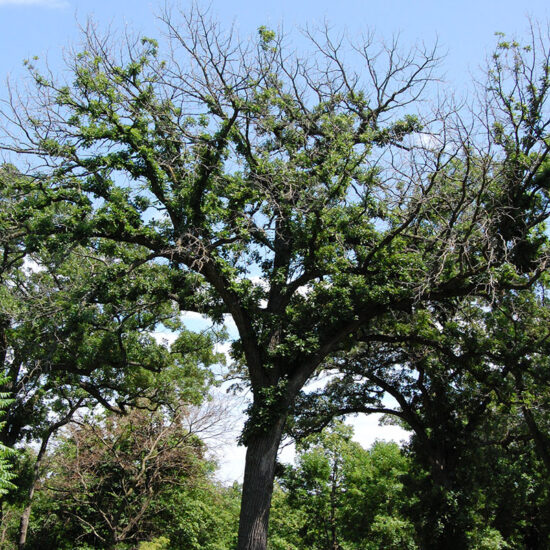Why Is My Oak Tree in Minnesota Dying?
Oak trees are a beloved feature of Minnesota landscapes, but many homeowners are noticing signs of decline over the past few years. It doesn’t take an expert to recognize one of the most iconic trees in our urban forests, and with them being so easily distinguishable, most people are quick to notice when something isn’t right. Oaks are solid, majestic trees but they aren’t without their issues. After multiple years of drought in Minnesota, oaks are slow to rebound and all that stress can make them susceptible to other issues if not addressed. We compiled a list of the most common issues we have seen in oak trees around Minnesota, along with management options to help keep your trees healthy.
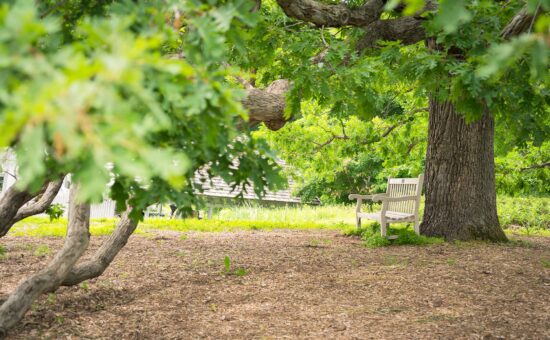
Diseases and Environmental Stressors Affecting Minnesota's Oak Trees
Oak Wilt
Oak Wilt is a vascular fungus that can affect whole stands of trees if left unchecked. Oak wilt in trees in Minnesota shows up in the tree’s canopy as sections of wilting brown leaves, moving down limbs toward the stem as the disease progresses. The leaves eventually fall off, leaving a crunchy litter of brown leaves near the base of your tree. The fungus enters the tree’s vascular tissue through beetles carrying spores that feed on newly broken twigs. The tree tries to prevent the spread of disease by plugging up these tissues. Unfortunately, the pathogen moves too fast, and the tree ends up blocking its ability to take up water.
Two-Lined Chestnut Borer
We’ve seen a dramatic increase in Two-Lined Chestnut Borer (TLCB), over the last several years as oaks in Minnesota have dealt with moisture stress. TLCB is a native insect and a close relative of the Emerald Ash Borer (EAB), which has devastated our ash population for the last decade. Damage from TLCB appears very similar to EAB damage in oak trees, starting with tip dieback as the beetle’s larvae tunnel through the tree. Healthy trees are usually unaffected, so keeping a healthy tree happy by ensuring it’s getting enough water is a great first step to caring for your oaks and preventing TLCB.
Bur Oak Blight
Bur Oak Blight (BOB) is a foliar fungal disease that causes leaf drop in bur oak trees. We haven’t seen many cases of BOB in Minnesota over the past few years since it prefers wet springs and early summers, but it’s back in 2024. Unlike oak wilt and Two-Lined Chestnut Borer, which start at the tips, BOB begins in the inner canopy and moves outward. It causes wedge-shaped dead sections on leaves and purple lesions along the main vein. Swollen, blackened petioles (the part of the leaf that attaches to the branch) are common when leaves drop, and dead leaves may stay on the tree through early winter due to blocked signals for leaf drop.
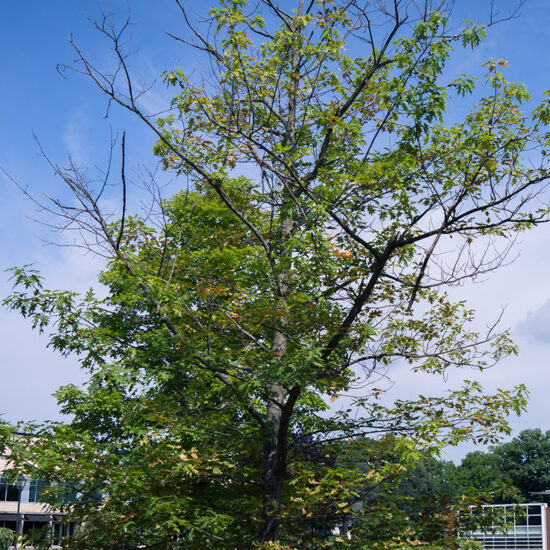
Drought
Minnesota is finally getting rain again, but our oak trees are still not out of the woods yet. In the short term, drought stress shows up as an overall wilting of the plant. This can be distinguished from pathogens like oak wilt by looking at the plant in its entirety. A very severe drought can cause some oaks to quickly drop their leaves during the growing season since they can’t support them with water. The long-term effects of drought can take several years to be visible in an affected tree. Water is central to nearly all processes in a tree’s life, from photosynthesis to nutrient transportation around the plant. When that water supply dries up, the tree becomes weaker and more susceptible to other pests and pathogens. Read our watering tips article.
What are the Signs of a Diseased Oak Tree in MN?
Many of the symptoms of oak conditions can look similar which make it difficult to know for sure what you’re looking at. Additionally, there’s no rule that a tree can’t have more than one problem at the same time. If your oak tree looks sad, your best bet is to have an arborist come out to confirm what’s wrong before taking action, but if you’d like some indicators to know when it’s time to make a call there are some easy identifiers to look for.
Browning leaves aren’t always bad; in Minnesota, it’s just a normal condition for most of our oaks in the fall. Bur oaks don’t have very showy fall color; they just turn muted yellow, then brown, and fall off. But if your oak is browning in the middle of the summer, it’s likely a sign of trouble.
If your oak tree is losing ts leaves off the tips of some branches, it’s a sign that something is blocking the flow of water to that branch. It might be a broken branch, a canker, or bugs chewing through the vascular tissue. In an oak, there’s a decent chance it’s two-lined chestnut borer.
Yes, trees behave, and paying attention to their behavior can tell you if something is wrong. No, they aren’t going to get up and run away, though that would be very abnormal. For instance, the tree might be doing something you haven’t seen it do before, like hanging on to leaves in the winter. For a red oak, this is typical, however, for white oaks, it’s unusual. Bur oaks and white oaks shouldn’t retain their leaves through the dormant season, and if you see it on a bur oak, it’s a sign of bur oak blight. A rapid decline in red oaks is also an abnormal behavior, and so is quickly dropping leaves, which can happen under heavy drought stress and oak wilt.
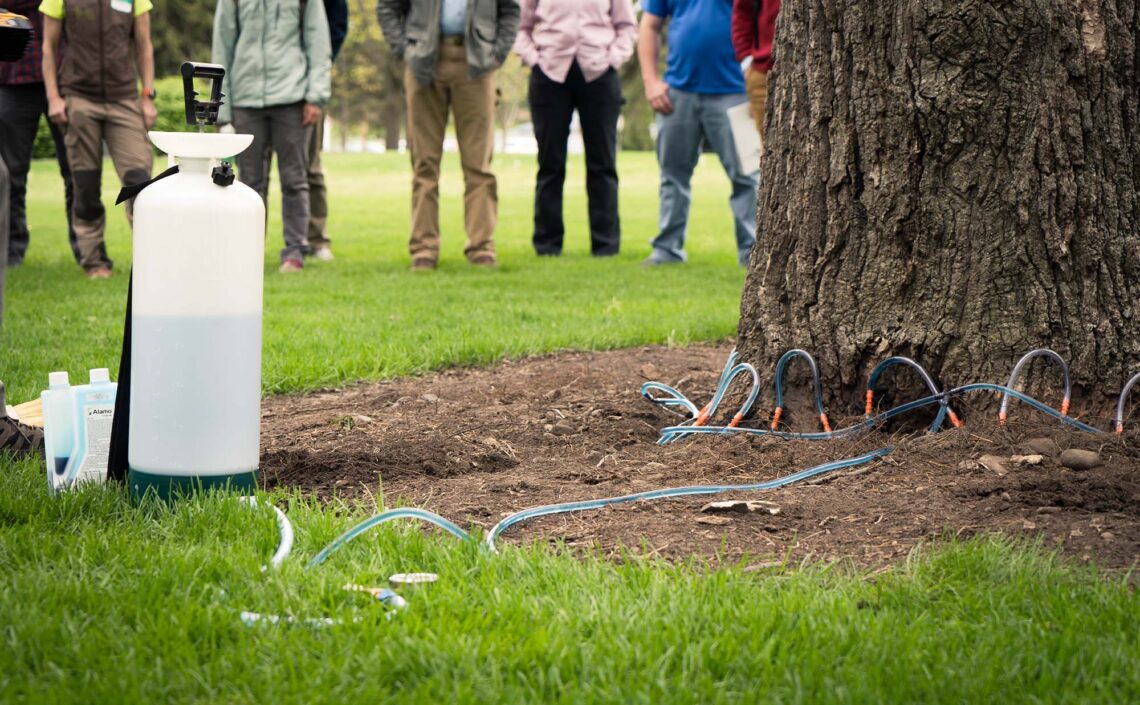
Oak Wilt Treatment
Can a Sick Oak Tree in Minnesota be Saved?
Yes, and no. It depends on the tree, its condition, and the motivation of the person managing the tree. Some diseases like oak wilt in red oaks, are fatal, which is why we treat them preventatively. However, white oaks can be treated after symptoms arise. Two-lined chestnut borer can be treated both preventatively and therapeutically, but it’s easier to just keep your tree healthy by making sure it stays watered and protected from injury when possible. Drought-stressed trees can sometimes recover with proper watering, but we often have to manage two-lined chestnut borer as well. Applying a growth regulator called Cambistat also helps by slowing the tree’s growth and allowing it to shift energy towards root development and defense.
Reach Out to a Certified Arborist in Minnesota for More Info
Oaks are magnificent trees, and having a big, beautiful oak in your Minnesota yard can provide a lifetime of shade and other benefits. If you have an oak that is struggling or you want to make sure your oak will be around for generations to come, talking to a certified arborist is a great first step in providing your tree the care it needs. Your arborist will be able to recommend reactive and proactive healthcare options to make sure your oak has the best chance to survive and thrive.
Other items you may be interested in:
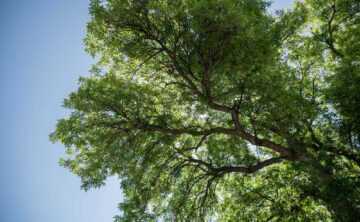
Five Tips to Keep Your Minnesota Trees Resilient in Minnesota’s Shifting Climate
Unlike trees in a forest, urban trees deal with a lot of stressors that compromise their health–starting with competition from turf grass for water and
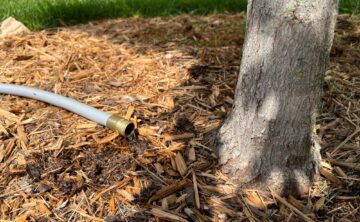
Do I Need to Water My Trees & Shrubs in Minnesota?
The answer depends on the age of the tree or shrub. Newly planted trees and shrubs need regular watering for approximately two years to help
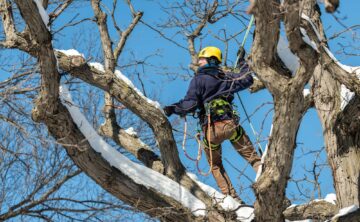
Five Reasons To Prune Your Trees This Winter
Pruning is a key part of keeping trees healthy and safe to live with in your Minnesota yard. It’s also one of the only landscape

